Ashutosh Sao
L3S Research Center, University of Hannover
Spatially Constrained Transformer with Efficient Global Relation Modelling for Spatio-Temporal Prediction
Nov 11, 2024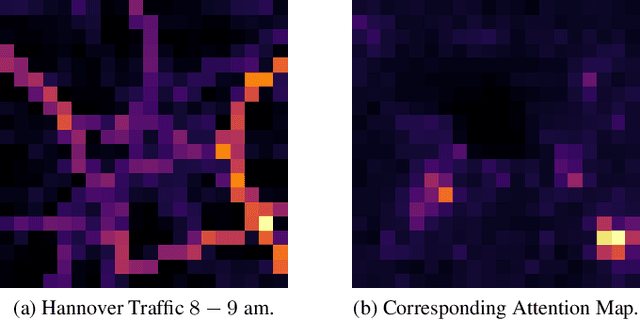

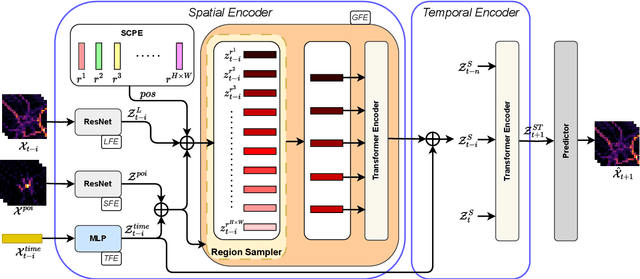

Abstract:Accurate spatio-temporal prediction is crucial for the sustainable development of smart cities. However, current approaches often struggle to capture important spatio-temporal relationships, particularly overlooking global relations among distant city regions. Most existing techniques predominantly rely on Convolutional Neural Networks (CNNs) to capture global relations. However, CNNs exhibit neighbourhood bias, making them insufficient for capturing distant relations. To address this limitation, we propose ST-SampleNet, a novel transformer-based architecture that combines CNNs with self-attention mechanisms to capture both local and global relations effectively. Moreover, as the number of regions increases, the quadratic complexity of self-attention becomes a challenge. To tackle this issue, we introduce a lightweight region sampling strategy that prunes non-essential regions and enhances the efficiency of our approach. Furthermore, we introduce a spatially constrained position embedding that incorporates spatial neighbourhood information into the self-attention mechanism, aiding in semantic interpretation and improving the performance of ST-SampleNet. Our experimental evaluation on three real-world datasets demonstrates the effectiveness of ST-SampleNet. Additionally, our efficient variant achieves a 40% reduction in computational costs with only a marginal compromise in performance, approximately 1%.
Reinforcement Learning-based Placement of Charging Stations in Urban Road Networks
Jun 13, 2022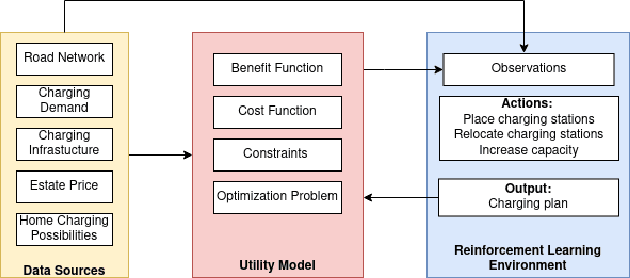

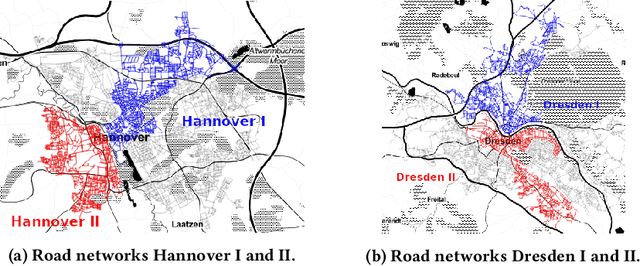
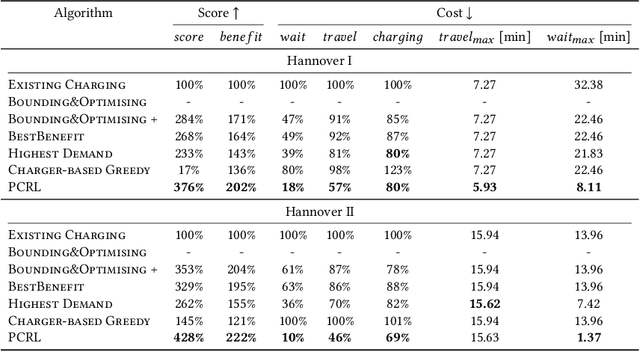
Abstract:The transition from conventional mobility to electromobility largely depends on charging infrastructure availability and optimal placement.This paper examines the optimal placement of charging stations in urban areas. We maximise the charging infrastructure supply over the area and minimise waiting, travel, and charging times while setting budget constraints. Moreover, we include the possibility of charging vehicles at home to obtain a more refined estimation of the actual charging demand throughout the urban area. We formulate the Placement of Charging Stations problem as a non-linear integer optimisation problem that seeks the optimal positions for charging stations and the optimal number of charging piles of different charging types. We design a novel Deep Reinforcement Learning approach to solve the charging station placement problem (PCRL). Extensive experiments on real-world datasets show how the PCRL reduces the waiting and travel time while increasing the benefit of the charging plan compared to five baselines. Compared to the existing infrastructure, we can reduce the waiting time by up to 97% and increase the benefit up to 497%.
Deep Information Fusion for Electric Vehicle Charging Station Occupancy Forecasting
Aug 27, 2021
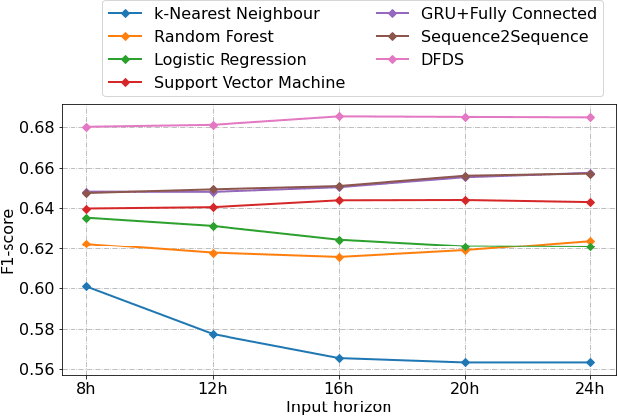

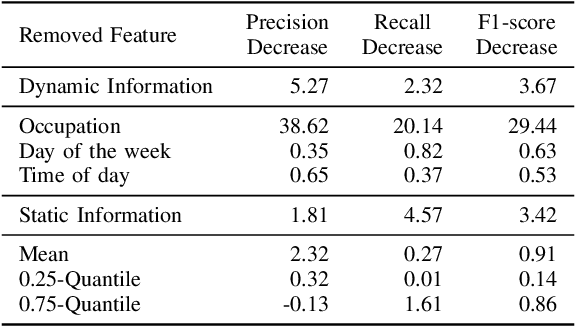
Abstract:With an increasing number of electric vehicles, the accurate forecasting of charging station occupation is crucial to enable reliable vehicle charging. This paper introduces a novel Deep Fusion of Dynamic and Static Information model (DFDS) to effectively forecast the charging station occupation. We exploit static information, such as the mean occupation concerning the time of day, to learn the specific charging station patterns. We supplement such static data with dynamic information reflecting the preceding charging station occupation and temporal information such as daytime and weekday. Our model efficiently fuses dynamic and static information to facilitate accurate forecasting. We evaluate the proposed model on a real-world dataset containing 593 charging stations in Germany, covering August 2020 to December 2020. Our experiments demonstrate that DFDS outperforms the baselines by 3.45 percent points in F1-score on average.
 Add to Chrome
Add to Chrome Add to Firefox
Add to Firefox Add to Edge
Add to Edge